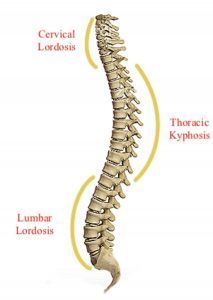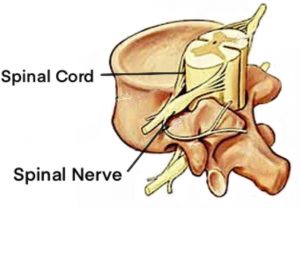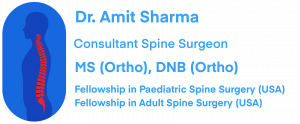Normal Spine
Normal Spine Structure
The human spine or backbone is one of the most important part of your body. Spine runs from the base of the skull to the pelvis. It serves as a pillar to support the body’s weight for upright posture and to help you sit and stand. It allows body to move freely and to bend with flexibility. Spine also protect your spinal cord and internal organs.
Spine has three natural curves that give it an “S” shape when viewed from the side. These curves give body its shape and also help the spine withstand great amounts of stress by providing a more even distribution of body weight.
The spine is made up of a multiple small ring like bones, called vertebra, that are stacked like blocks on top of each other with cushions called discs in between to help absorb shock/ load.
The spine is divided into three main regions:
- Cervical spine — The cervical spine (neck) is made up of seven vertebrae numbered C1 to C7. The vertebrae of the cervical spine are specialized to allow for neck movement. The first spinal curve is located at the cervical spine which bends forward, resembling a “C.” This forward curve is called lordosis.
- Thoracic spine — There are 12 thoracic vertebrae (T1 to T12) in the chest section, called the thoracic spine (upper back). The ribs are attached to the spine on the thoracic vertebrae and forms chest cage. The curve of the thoracic spine bends backwards, which is called kyphosis.
- Lumbar spine — The lumbar spine (lower back) usually consists of five vertebrae numbered L1 to L5. Some people might have four only (L1-L4) and some six lumbar vertebrae (L1-L6), which are a normal variants. The lumbar spine connects the thoracic spine and the pelvis and bears the bulk of the body’s weight. The curve of the lumbar spine bends forward (lordotic curve).
Below the lumbar spine there is a large piece of bone called the sacrum. The sacrum actually consists of several vertebrae that fuse together during development. Below the sacrum is a group of small bones called the coccyx (or tailbone).
Vertebra
Each vertebra is a ring like structure with a big body on the front and an arch in the back. Two vertebrae are joined together by Intervertebral Disc in the front and two facet joints in the back. These joints allow movements between two vertebral bodies. In the centre of each vertebra is a large opening, called the spinal canal. Spinal cord runs from brain down to the tailbone in this spinal canal.
Intervertebral discs
Intervertebral discs cushioning pads that sit between the front part pf vertebrae (Vertebral body) and act as shock absorbers. Each intervertebral disc is made up of a soft, gel-like centre (the nucleus pulposus), which is surrounded by a tough outer layer called (annulus fibrosus). When a disc herniates, some of the soft nucleus pulposus comes out through a tear in the annulus. This can cause radiating pain as disc material puts pressure on nerves.
Spinal cord and Nerves
The spinal cord connects your brain with the rest of your body. Brain controls body movements and organ functions by spinal cord and nerves. As the spinal cord runs through the spinal canal, it branches off into 31 pairs of nerve roots, which comes out on right and left side through neural foramina and supplies respective area of skin, muscles and other body organs. The nerves from the cervical spine supplies upper chest and arms. The nerves of the thoracic spine supplies the chest and the abdomen, and the nerves of the lumbar spine control the legs, bowel, and bladder.



